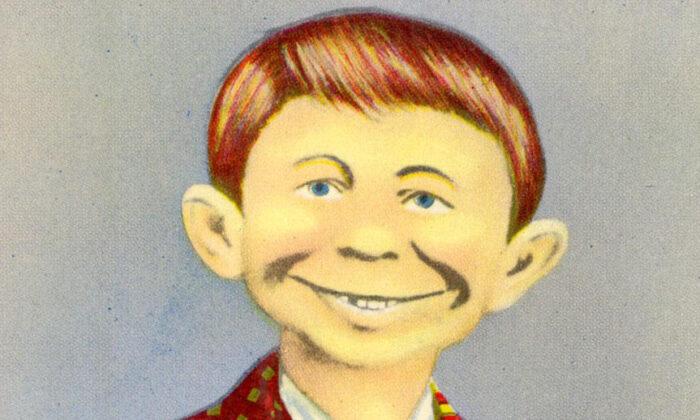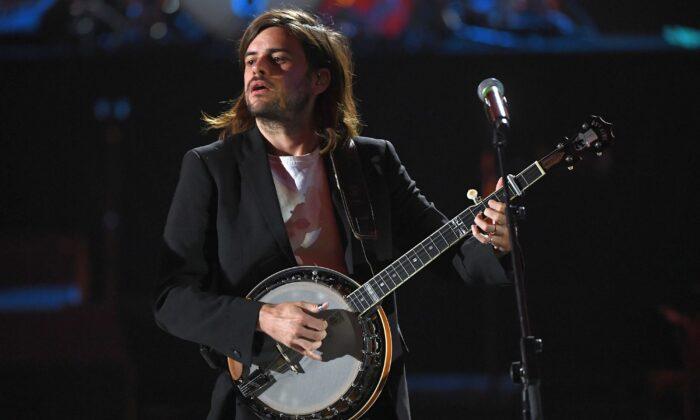In 1971, Mad magazine published a parody of Barbara Streisand. Streisand, already a superstar who was active in liberal politics, became Buddy (the Yiddish word for grandmother) Strident in the film “On a Clear Day You Can See a Funny Girl Singing Forever.”
Streisand would not be touched by most comics today, which is one reason to miss the old Mad magazine, which is now only sporadically published.
The history and cultural impact of Mad is addressed in “Seeing Mad: Essays on Mad Magazine’s Humor and Legacy,” a 500-page academic tome edited by Judith Yaross Lee and John Bird. Lee and Bird are both emeritus professors.
For younger readers: Mad was a satirical magazine that published from 1952 to 2018. It parodied movies, TV, novels, politics, and everyday American life, using slapstick, irony, parody, burlesque, and mockery.
It’s tempting to joke about a group of scholars taking on Mad, i.e., academic eggheads carefully examining a magazine that prided itself on its explosion of pretension, not to mention the mirthful self-awareness of the self-described “idiots” who created it. That’s a mistake. Mad had an epochal impact on late-20th century American humor. Stephen Colbert, “Saturday Night Live,” Jon Stewart, Jim Carrey, Quentin Tarantino, “Mad Men,” the irony of late night comedy, and the snarky tone of the modern internet—Mad was the progenitor, in major and minor ways, of all of these expressions. There would be no “South Park” if there hadn’t been a Mad.
In her introductory essay, “Seeing Mad,” Lee makes an insightful comparison. She notes that while both Mad and the New Yorker were magazines that revolutionized American culture, the New Yorker claimed to represent high culture from a Manhattan perch, but many of its contributors were from places other than New York. At the same time, Mad aimed for a national and even international audience, while most of its creators were from New York—specifically, the Jewish New York of Brooklyn and the Bronx. “Founding editor and chief writer Harvey Kurtzman, artists Will Elder, Al Jaffee, John Severin, and writer-artist Al Feldstein (who succeeded Kurtzman as editor in April 1956) were buddies from New York’s High School of Music and Art,” Lee writes.
Yet while Mad’s burlesque humor and anti-establishment satire was often rooted in Jewish sensibilities, it also appealed to anyone who wanted to shoot spitballs at America’s major political and cultural institutions—whether the sacred cows were on the left or the right.
Mad was certainly countercultural, but the culture it zapped could as often be liberal as well as conservative. Yes, Nixon and Reagan and Trump were targets. But so was Jimmy Carter, the sanctimony and money-grubbing of Hollywood, the stupidity of superheroes, and the appearance of hippies. Preachy anti-war show M*A*S*H became “Meshuggah,” a Yiddish word for a silly or nonsensical person. “Parodies always transgress the originals they imitate, but need not endorse liberal views,” Lee writes. For Mad, “laughs trumped cultural politics.”
As a kid in the 1970s. Mad was a monthly delight for me. The magazine was then at the height of its circulation (2 million), and every month I would experience ineffable joy at the sight of a new issue on the newsstand at People’s Drug Store, the cover always including the bemused “What, Me Worry?” visage of mascot Alfred E. Neuman. Inside was the work of Jaffee (the “ridiculous fold-in”), “Spy vs. Spy,” Don Martin, takedowns of dumb advertisements, Mort Drucker, Sergio Aragones, and writers such as Dave Berg, Antonio Prohías, Paul Coker Jr., Jack Rickard, Don Edwing, Dick DeBartolo, Stan Hart, Dave Berg, and Lou Silverstone. Geniuses who taught me to question authority—even if coming from Washington or Hollywood.
The mass media are still lying to you. Sadly, today’s Mad is not robust enough to point that out. The magazine has been the victim of the very world it created, even as the Stephen Colberts Mad midwived have become lapdogs for corporate, Hollywood, political, and media power. Conservatives are the only ones willing to furshlugginer those meshuggahs.





Friends Read Free